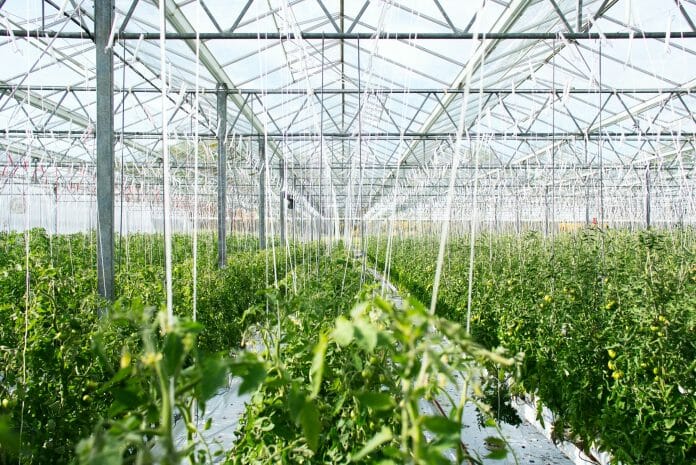By Jason Loh,
Agriculture in Malaysia is arguably at a pivotal crossroad and whether or not it’ll enjoy sustained transformation is dependent on making a “quantum leap” through digitalisation such as “smart farming” and “precision farming”.
As widely recognised under the 11th Malaysia Plan (2016-2020), digitalisation is key to increased productivity, addressing the issue of monoculture (single crop production) and therefore crop variety promotion as well as not least, bolstering crop resilience.
It involves the application of smart technologies to cross-fertilisation, plant nutrition, seeding, cultivation, extraction, cropping and processing methods, and even such activities as site selection and conversion from non-agricultural to agricultural land.
A commonly used example is where the front and rear of an artificial intelligence or AI-programmed tractor is pre-fitted with nitrogen sensor and fertiliser spreader, respectively.
The purpose of the sensor is to determine the crop’s nitrogen requirements and levels. In doing so, the fertiliser application rate by the spreader mounted at the rear of the tractor will be automatically adjusted by the sensor.
This process in precision farming ensures minimal leakages of fertiliser resources alongside reduction in crop losses. In turn, this would not only lower costs for the farmer but also ensure that government subsidies are costs-effective.
In Malaysia, the use of drones for crop spraying was already piloted in 2016 covering some 2000 hectares of paddy fields under the care of the Muda Agricultural Development Authority (Mada) in collaboration with the Malaysian Agricultural Research and Development Institute (Mardi). This helps to reduce the workload of paddy farmers significantly, particularly since the average age is 60 years old (Mada Annual Report, 2016 as quoted in a Khazanah Research Institute (KRI)’s report entitled, “The Status of the Paddy and Rice Industry in Malaysia”, 2019).
At the same time, remote sensing, global positioning satellite (GPS) and Geographic Information System (GIS) have all been applied to our paddy cultivation management practice too.
Other specific examples of precision farming in Malaysia include the deployment of Kontron’s Industrial Computer Platform KBox-A201 gateway by Abbaco Controls, a local Malaysian IOT-based solutions specialist working on behalf of the Ministry of Agriculture & Food Industry (Mafi).
This IOT-driven irrigation system allows for a decentralised management of the water gates. Paddy farmers could make real-time irrigation decisions based on an analysis of the sensor data such as temperature and current water levels so as to increase yields.
Moving forward, EMIR Research would like to make the following policy recommendations:
- Stakeholders such as Mafi, Mardi, Mimos Berhad, and the National Institutes of Biotechnology Malaysia (NIBM) to forge and foster strategic collaborations with other players such as Crops for the Future (CFF), National Tech Association of Malaysia (PIKOM) and Funding Societies Malaysia, a leading crowdfunding or peer-to-peer platform for SME financing.
The aim is to boost research and development (R&D) and private sector investment to improve crop characteristics, crop breeding and fertilisation, post-harvest management, food processing technology, and product development so as to deliver healthy produce as well as address the challenge of malnutrition.
- Include an emphasis on climate-smart agriculture (CSA) in the 12th Malaysia Plan (2021-2025). Digitalisation is critical in assisting farmers to effectively adapt to climate change and promoting agricultural resilience.
Digitalisation also ensures effective transition and transformation from monoculture to polyculture plantation and crop rotation, thus reducing the carbon footprint.
- Through the use of LiDAR (light detection and ranging) technologies, suitable land for farming should be identified and earmarked to reduce over-reliance on certain areas like the Cameron Highlands which supply a substantial level of our domestic vegetable supplies.
- The government should increase allocation under Agriculture Industry 4.0 for forthcoming Budget 2021 and set a clear timeframe for a blueprint in relation to the production of genetically-modified organisms (GMO) crops under the 12th Malaysia Plan, especially vegetables.
Already Mardi has successfully produced newer strain of paddy such as the fragrant paddy strain code named MRQ 76 and the hybrid known as Kadaria 1 which is not only resistant to fungi and bacteria, but also able to yield eight tonnes per hectare.
Digitalisation of agriculture as applied to GMO also holds out the possible huge potential to, for example, resolving our malnutrition challenges.
Relevant players and stakeholders would be the Bioeconomy Corp (formerly BioTech Corp), the Malaysian Biotechnology Information Centre (Mabic) and the public universities with experts such as Dr Hoe-Han Goh, lead researcher at the Plant Functional Genomics Research Group, Institute of Systems Biology (Inbiosis), Universiti Kebangsaan Malaysia (UKM).
Of course, digitalisation and the IOT are now used for sky and vertical farming, and by extension in the plantation culture of aeroponics and hydroponics.
In the future, quantum computing and processors will in due course become the norm in solving the multi-dimensional complexities and with these, the typical and recurrent conundrums in the field of agriculture.










Reading your article was abit like
Er Chinese Marketing?
(No im not racist and am of Chinese descent)
where given any space just put as much as possible “things” ; info words pictures colours on there!
where on the one hand, it can be seen as vigorous with lots of details. While a more contemporary view is
first , likely to concern about the sacrifice of design ; too much too many looking cluttered messy.
While most believe that a reader or target audience on average have a certain range of memory retention attention spans such that from a functional objective such as effectiveness on communicating a very small number of messages or main point/s if any is hoped to be the minimum ‘take away’ for any prospective reader. This isnt a variable on the authors cognitive prowess but about well founded recommendations from behavioral research , insights gleaned from our advancement in understanding our Brain.
The term “Less is more ” though relatively young in its etymology somewhere in the 1800s has thankfully been embraced by artists and designers in this present era where simple trumps complicated.
The point is as a student of knowledge and agriculture yet a pragmatic ordinary Malaysian reader , i find the experience of this article akin to a massive sand storm with dizzying numbers phophetic warnings unknown
yet like a mirage i find myself at odds at the incredlebility of the sheer number of M.a.r.s and C.i.r.c.u.s’s in existence much less this proposed tech driven tipping point.
In fairness , show me the results of positive change for any specific tech and im open to support.
Instead of listing a 100 projects and their acronyms publish 1 or 2 real actual application with quantifiable benefits supported empirical numbers detailed costs of any of the projects mentioned not as a negative critique but a meaningful positive engagement where transparent scrutiny is the norm empowering all of us from the learnings of the many ongoings from experts in their respective fields.